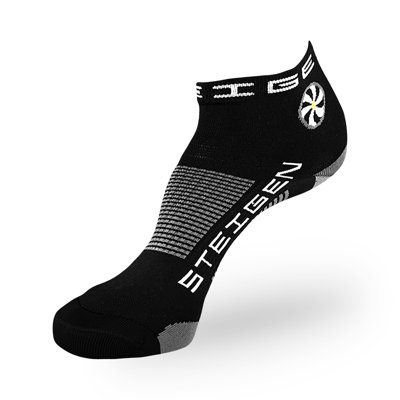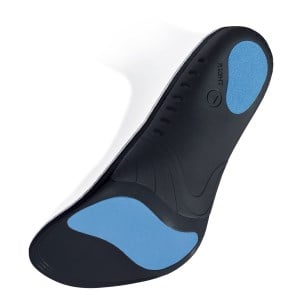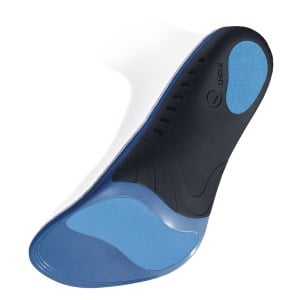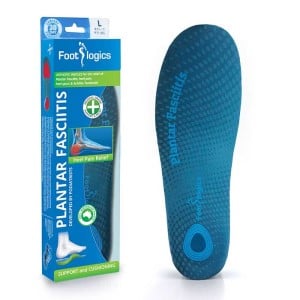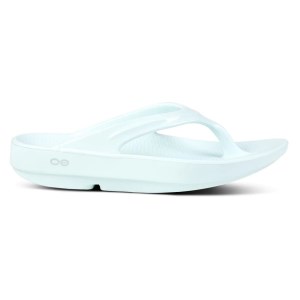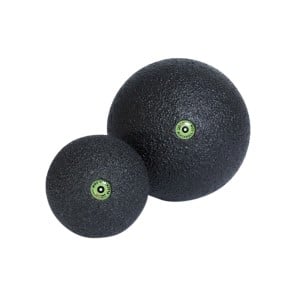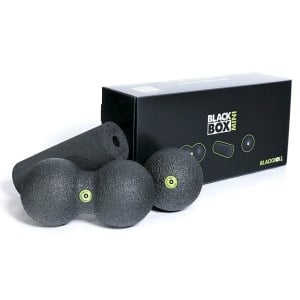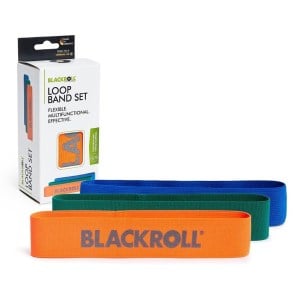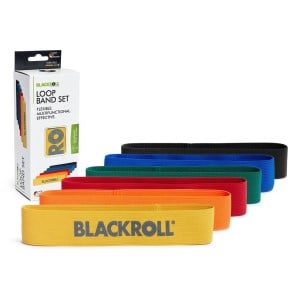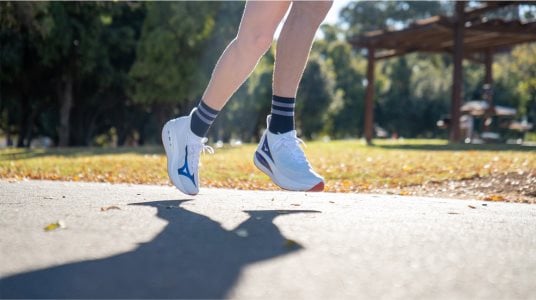A Runner’s Guide To Loving And Caring For Your Feet
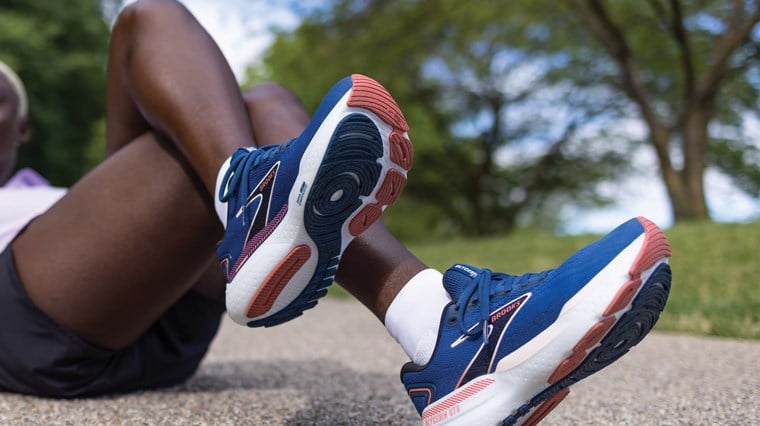
Black toenails? Painful blisters? Cracked heels?
If you’re a runner, you’ve probably experienced one or more of these foot problems that can put a pause on your training or send your favourite thongs & slides into retirement.
Preventing and managing these common foot conditions begins with proper foot care. Your feet work hard to help you run your fastest parkrun or achieve your marathon goals.
As a runner, your feet endure repetitive impact forces as they hit the pavement. Everything from the fit of your running shoes to your post-run recovery plan can have a role in their overall health and healing.
Sportitude answers the common questions runners are asking about how to keep your feet healthy. With our foot-friendly tips, you can build an effective foot care routine to stay run-ready from heel to toe.
Running Shoes, Running Socks & Insoles
How should my running shoes fit?
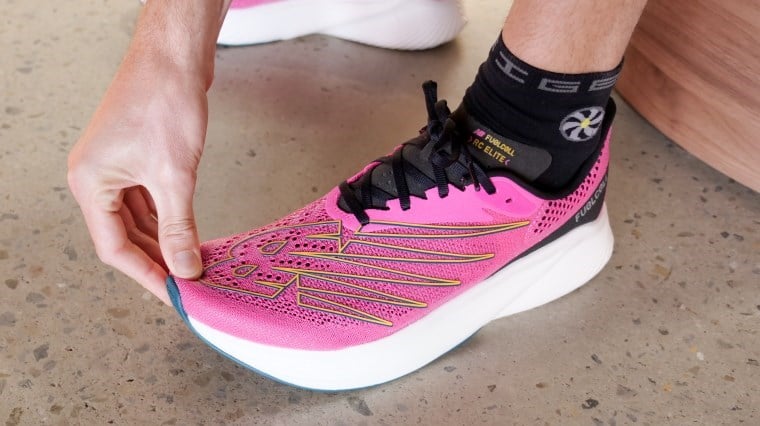
Perfectly fitting running shoes are a runner’s best friend whereas poorly fitted shoes can damage your feet in numerous ways.
A small amount of wriggle room (about a thumb’s width) between the end of your largest toe and the end of the toe box of your running shoe is ideal. This will help prevent black toenails that are caused by the repetitive trauma of the toe colliding with the front of too short a shoe. Keep in mind that during longer runs like half marathon training, your feet also naturally expand, making this extra space a necessity.
However, be aware that traditional race day shoes typically offer a snugger fit than high mileage running shoes. This is to help save weight and create a secure feel to support high speeds.
An improper fit may also cause blisters – whether the shoe is too wide, creating friction as the foot shifts inside the shoe, or too narrow, pinching the skin. Many leading brands of running shoes like Asics, Brooks and Hoka offer their key ranges in varying widths - from narrow to extra wide, depending on the specific model - to accommodate different foot types. The Asics Gel Kayano, Brooks Ghost and Hoka Bondi are popular examples of daily trainers that are available in multiple widths.
Check out the following blogs to improve your understanding on how to choose the right running shoes for you:
- How To Choose The Right Running Shoes - Discusses how to choose the right shoes for the right purpose, from easy runs to race day
- What Type Of Running Shoe Is Best For Me? - Discusses how to choose the right shoe for overpronated, neutral and supinated/under pronated foot types
When should I replace my running shoes?
As hard as it is to give up your best running shoes, once they hit around the 500km – 800km mark, it’s time to let them go. Keep in mind this number will vary based on the function and specific model of the running shoe, with traditional racing shoes often cutting back on durability to save weight, while high mileage running shoes typically have a longer lifespan.
When exactly your shoes are ready for retirement may also depend on your body mass, running style (e.g. forefoot, midfoot or heel striker), whether you have a light or heavy foot strike, your running surface and your running frequency.
What does your running shoe lifespan have to do with the health of your feet? When the midsole of your running shoes wears out, it leaves your feet exposed to harder landings. It is the goal of many brands to offer this strategic protection through signature cushioning technologies such as Hoka’s EVA, Asics’ FlyteFoam or Brooks' DNA Loft.
However, cushioning doesn’t last forever, and with less protection between your feet and the ground, you’re potentially putting them at greater risk of conditions such as plantar fasciitis. To care for your feet, do a visual inspection of your shoes regularly.
You'll feel the difference in the midsole as the material degrades - becoming firmer as the cushioning compresses. Not only will this leave you at higher risk of injury, but you’ll feel less comfortable and less protected and your feet may fatigue faster during your runs. When looking at the medial or lateral side of the shoe, you may notice creases or wrinkles in the midsole material and it doesn’t bounce back into shape like it used to, suggesting it’s breaking down.
Turn your shoe upside-down, and you may see areas of smooth tread where the outsole is wearing out. These are signs it’s time to consider purchasing a new pair of running shoes. To be kind to your feet, transition to new running shoe models gradually as each will act on your foot differently.
Sportitude has partnered with UPPAREL to help you recycle your pre-loved running shoes and running clothing to give them a new life.
Check out When Should You Replace Your Running Shoes? for more guidance.
What type of socks are best for running?
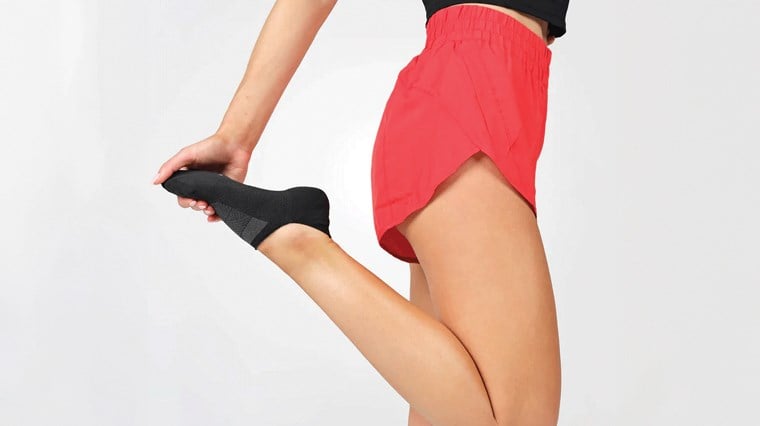
Cheap cotton socks are not foot-friendly when it comes to running, as they absorb sweat and trap it next to your skin, cultivating unhealthy conditions. The solution is technical running socks. They are a priority for your running sessions and come in both thin and minimalist, or thick and cushioned styles.
Typically made of synthetic materials, a high-quality running sock will be breathable, sweat-wicking and prevent friction between your skin and running shoe for an irritation-free ride. By keeping your feet dry, they decrease the risk of developing athlete’s foot (tinea pedis) that's caused by a fungus that thrives in moist and warm environments.
Your running sock choice can also change the fit and feel of your shoe. For example, thick options like Lightfeet running socks provide extra padding between your feet and the internal ‘wall’ of the shoe, whereas ultra-thin running socks like Steigen running socks provide a barely there feel with minimal impact on the overall fit of the shoe. Feetures running socks fit in-between the two as a happy medium.
For Sportitude's full guides on running socks, check out:
- What Type Of Technical Running Sock Is Right For Me?
- 5 Reasons You Should Use Technical Running Socks
-
Lightfeet Evolution Mini - Unisex Running SocksBuy 2 Get 1 FREE$34.99
-
Feetures Elite Light Cushion No Show Tab Running Socks$34.99 $31.49
-
Steigen Quarter Length Running Socks$21.99 $18.99
Do insoles really help your feet?
Yes, if you’re seeking to add to the support or cushioning characteristics of your running shoe, the right running shoe insole may help personalise the feel and comfort.
However, it’s important to keep in mind that an insole can't transform the feel or function of a running shoe entirely. Imagine building a solid home on unstable foundations – the foundations won’t inherently become more stable. The relationship between insoles and running shoes is similar.
In terms of running shoes, it means you should choose the right running shoes for your foot type first and foremost, and then use an insole to fine-tune the experience.
Insoles for overpronated foot types
Running shoe insoles cater to the requirements of specific foot types – so it’s not a one-size-fits-all scenario. Flat foot types or overpronated foot types tend to roll excessively inward on the medial side (big toe side) of the foot. The arch collapses too aggressively on foot strike, inhibiting your foot’s natural ability to provide stabilisation. Alongside stability running shoes, overpronators may benefit from insoles or orthotics designed to provide high levels of support.
-
Lightfeet Support Insoles$49.99 $44.99
-
1000 Mile UP Advanced Sports Insole with F3D - Low Arched or Flat Feet$61.95 $54.99
Insoles for supinated / under pronated foot types
On the other hand, high arched or supinated foot types tend to roll excessively outward on the lateral side (smallest toe side) of the foot. With the arch of the foot raised off the ground, the natural shock absorption your foot provides is limited. Under pronators typically benefit from being matched with highly cushioned neutral running shoes. A shock-absorbing insole can assist in taking the pressure off your feet, to run with less discomfort and less fatigue.
-
Lightfeet Cushion Insoles$39.99 $34.99
-
1000 Mile UP Advanced Sports Insole With F3D - High to Medium Arched Feet$61.95 $54.99
Insoles for plantar fasciitis
Plantar fasciitis is a painful inflammation of the weight-bearing connective tissue (plantar fascia) that runs from your heel bone (calcaneus), through the arch of your foot and to the base of your toes.
The plantar fascia can be susceptible to overuse injuries as well as damage caused by overpronation, under pronation, running on hard surfaces or neglecting to increase your training load gradually – that includes mileage, speed and incline.
If you believe you are at risk of or are recovering from plantar fasciitis, specialised insoles can assist in prevention and relief. Alongside providing a balance of support and cushioning, they may help guide your feet into a healthier stride to reduce targeted pressure.
-
Lightfeet Plantar Fasciitis 3/4 Unisex Insoles$39.99 $34.99
-
Footlogics Plantar Fasciitis Orthotic Insoles$49.99 $39.99
Recovery
Do recovery shoes really work?
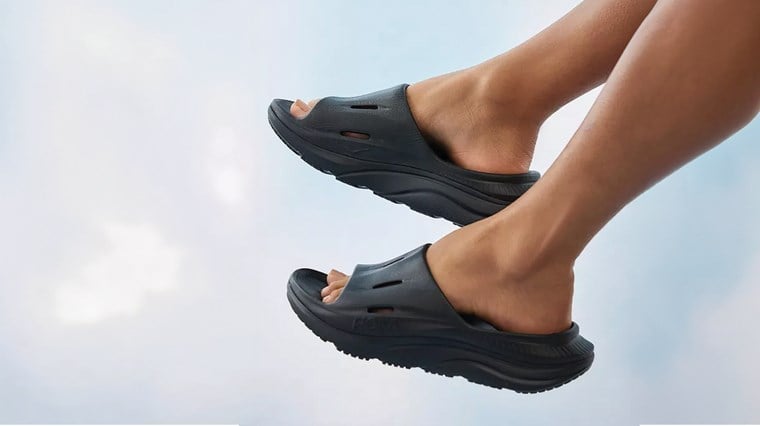
Yes, especially if you’re a runner or work in industries such as hospitality or nursing where you spend long hours on your feet, recovery shoes can form a valuable part of your self-care.
Recovery is just as essential as training itself to improve your performance. However, it’s easy to underestimate how vital recovery is for the health of your feet.
Specialist brands like OOFOS are turning the focus back to recovery. Leaders in recovery footwear, they develop and produce ergonomic recovery sandals to support, rejuvenate and take the pressure off tired feet post-run.
The main difference between recovery shoes and standard thongs and slides is the cushioning - with the former providing shock-absorbing protection. Recovery shoes may also cradle your feet in a foot-contouring footbed and provide arch support, rather than being on a flat base.
OOFOS have engineered a unique and plush foam that responds entirely differently compared to typical running shoe foams. Many running shoe foams provide both cushioning and responsiveness to improve energy efficiency and help propel you into your next stride.
The foam in OOFOS thongs & slides sheds the responsiveness out of the equation – providing soft compression to soak up impact forces, keeping your feet protected.
Hoka is a running brand first and foremost, but like OOFOS they are also paving the way in the recovery space. Hoka running shoes themselves are stacked up high to pack in protective cushioning between your feet and the ground.
When it comes to Hoka thongs & slides for recovery, they take an entirely different approach to OOFOS. Hoka injects their recovery shoes with the trusted EVA cushioning of their flagship running shoes. Similarly, their rocker shaped geometry helps alleviate pressure off the feet.
When it comes to recovery shoes, it isn’t simply about treating your feet, or even hitting the pavement fresh for tomorrow’s running session. It’s about providing the essential care and comfort to help prevent common injuries.
For an in-depth look at recovery shoes, check out:
Get Rid Of Plantar Fasciitis: Why Every Runner Needs Recovery Shoes
-
Hoka Ora Recovery Slide 3 - Unisex Slides$119.99 $99.99
-
OOFOS OOriginal - Unisex Recovery Thongs$94.99
-
OOFOS OOlala - Womens Recovery ThongsFree Delivery in Aus$104.99
How can I speed up my foot recovery?

When it comes to the care and health of your feet, a professional massage can help protect against heel and arch pain like plantar fasciitis, keeping your feet and mind relaxed. However, from a cost and convenience perspective, this may not always be possible.
Blackroll has a variety of massage and stretch recovery tools designed with the needs of runners in mind. Having them available in your own home can transform your approach and commitment to recovery.
Blackroll Fascia Massage Gun
The Blackroll Fascia Massage Gun has been game-changing for runners and has multiple benefits. As a hand-held device, it allows you to pin-point areas of tension (trigger points) and apply a deep tissue massage through percussive therapy.
It helps to literally warm up muscles to be run-ready, increases the circulation of oxygen-rich blood to support performance and speed up recovery and helps alleviate tightness and tension in muscle tissues.
Alongside providing relief to key muscle groups, it can be applied directly to the base of your feet for a rejuvenating massage effect.
To find out more about how a massage gun can support your recovery, check out:
- Everything You Need To Know About Massage Guns
- The Best Small Massage Gun: Blackroll Fascia Gun Review
Blackroll Compression Recovery Boots
The Blackroll compression boots speed up your recovery with a different approach, encasing your entire lower body from feet to thigh. Using compression therapy, they increase blood flow, help eliminate lactate and fluid build-up, improve mobility, alleviate the sensation of ‘heavy legs’ and minimise the risk of limb edema (swelling) of the legs and feet.
Alongside the physical benefits, the Blackroll compression boots offer a relaxation effect like a traditional massage. 3 massage modes with 5 pressure levels allow you to personalise your self-massage easily and effectively.
Blackroll Mini Foam Rollers & Blackroll Massage Balls
Using massage & recovery tools like the Blackroll mini foam roller or Blackroll massage ball to gently apply pressure beneath your feet can relieve problem areas from tension and support the strengthening of your tissues and ligaments.
The small size of these myofascial release tools helps you isolate specific muscles. For a massage effect, roll your mini foam roller slowly back and forth beneath your foot from your toes to your heel while standing.
This action will help release tension and promote flexibility. You can also roll your massage ball in circular motions with the sole of your foot, applying gentle pressure to trigger points to help alleviate pain.
-
Blackroll Massage Ball - 8cm$21.90
-
Blackroll Blackbox Mini Set – Foam Roller & Massage Ball Set$65.90
What are examples of active recovery?
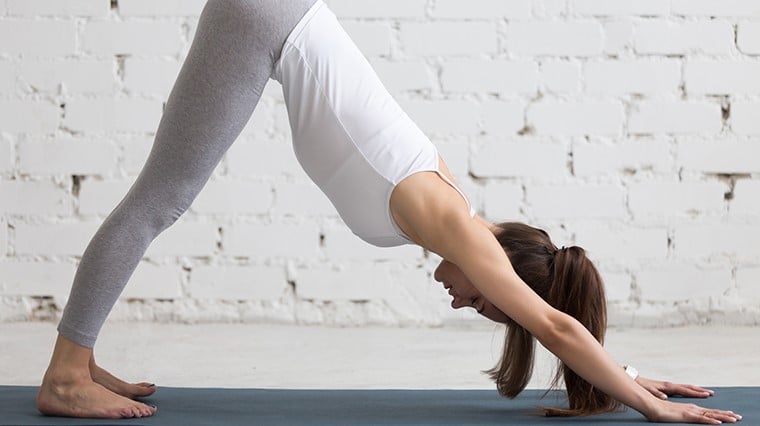
To help alleviate the impact of running stresses on your feet, break up your weekly running sessions with active recovery. Active recovery sounds like a paradox, however it provides an opportunity for key muscle groups to rest while training.
In the case of runners and supporting the health of your feet, active recovery may involve non- weight bearing exercises such as low-intensity swimming or cycling. These exercises continue to improve your cardio (heart) health, while allowing the overworked muscles and joints of your feet to relax.
By targeting different muscle groups, you’re also enjoying a more balanced training schedule, also referred to as cross-training. Including strength training and flexibility exercises like yoga in your routine can help you become a better runner – improving your power output and aiding in injury prevention.
For your feet, this means they get a break from the jarring impacts of running, allowing them to repair.
Foot Skin Care
How do you rehydrate dry feet?
Dry feet are at risk of cracked heels, and as heel fissures deepen, they can become extremely painful. Running on heel fissures without treatment can result in more damage with the repetitive impacts leading to bleeding and infection. Dirt can also become trapped inside, so foot hygiene is vital here.
Having soft, silky feet is one of life’s little joys. To rehydrate dry feet, apply a high-quality, thick moisturiser or heel balm to your feet daily post-shower. Alternatively, consider trying naturally hydrating plant-based butters and oils. Shea butter is both a humectant (attracts and retains moisture) and an occlusive (forms a protective barrier to prevent moisture loss). Coconut oil is antifungal and antibacterial, helping ward off athlete's foot (tinea pedis).
If you're showering at night, you can slip on everyday socks over the top of your feet after applying your choice of moisturiser and wear them to bed. This will help lock in the hydration overnight and assist in preventing painful, cracked heels.
Soaking your feet in a warm foot soak (not hot as this can be drying) for up to 20 minutes can help soften dry skin including calluses and form part of your self-care - lifting stress off body and mind. To boost the benefits of your foot soak, consider adding skin-nourishing ingredients like colloidal oatmeal that can help alleviate irritation.
Some people benefit from gently exfoliating their feet after a foot soak with a foot scrub brush or pumice stone when used properly and not in excess. This can help to remove dead skin, but be sure to apply a moisturiser following exfoliation as it can leave your feet feeling dry. Exfoliating with a pumice stone may not be suitable for sensitive skin types.
Alongside softening dry skin, a warm foot soak can help improve the flow of oxygen-rich blood to aid in repair and relaxation, soothing fatigued muscles. Alternatively, a cold foot soak may constrict blood vessels, reducing blood circulation to minimise swelling, inflammation and provide relief of short-term pain or soreness post-run.
Please note that although proper foot care at home can assist in prevention and management of certain conditions, if you have acute or chronic foot pain or skin damage, always seek the advice of your doctor or podiatrist. It's always best to have health problems you're concerned about checked by a healthcare professional before they become more severe. Foot soaks are not suitable for people with diabetes.
How do runners avoid blisters?
Alongside wearing anti-blister running socks and well-fitted running shoes, you can take a closer look at your pre-run skin care routine to save your feet from the pain of blisters. Especially when running long distances like a half marathon, marathon or ultramarathon, your feet may need special attention.
During longer runs, the skin-on-skin or skin-on-fabric friction such as in between the toes or at the back of the heel respectively can cause irritating chafing. The repetitive rubbing puts you at risk of blisters - fluid-filled pockets on the upper layers of skin that form as your body's response to protect against further skin damage.
Anti-chafe blister creams and balms are a small purchase that can make a world of difference. Applying them to these high-chafe zones creates an ‘invisible’, protective barrier against friction. Taking these preventative measures will enable you to run distraction-free, rather than having to pause mid-marathon or run to tend to your feet.
The Body Glide Original Anti-Chafing Balm is ideal for sensitive skin types and is made with plant-derived, allergen-free ingredients. This easy-gliding formula won't clog your pores, allowing you to sweat naturally for temperature regulation while being waterproof and sweat-proof to give you peace of mind on its effectiveness throughout your entire run.
The Skin Strong Slather Anti-Chafe & Anti-Blister Cream can be used as a preventative measure against blisters when applied in between the toes, while also providing soothing relief from skin irritation. It contains tea tree oil, benefiting you with its anti-fungal and healing properties to help keep your feet healthy.
-
Skin Strong Slather Anti-Chafe & Anti-Blister Cream - 118ml Tube$22.99
-
Skin Strong Slik Anti-Chafe Spray - 118ml$29.99
Foot Strength
How do I build strength in my feet?
Trail running & beach running
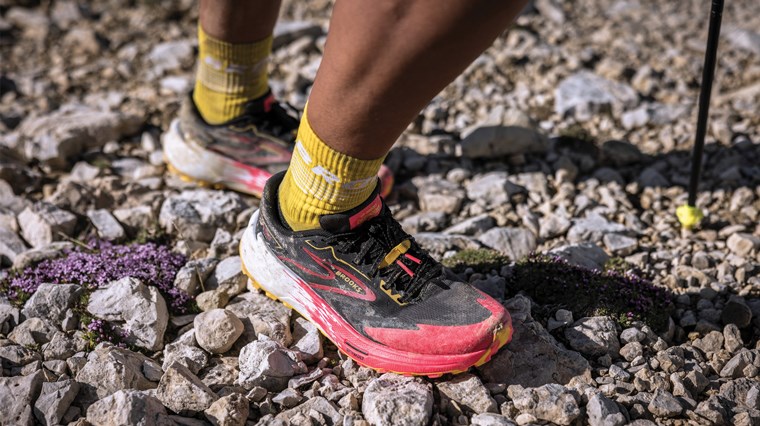
Like any muscle, gently exposing your feet to new challenges can allow them to acclimatise, adapt and strengthen. For example, occasionally trading the consistent nature of road running for trail running can help ‘train’ you to use your feet more intuitively.
During trail runs, your feet don’t always move in a straight line or in a smooth running rhythm. You may have to apply your feet in different ways to navigate the terrain – whether it’s leaping over gnarled roots or stabilising yourself on rocky grounds. The uneven, inconsistent nature of the trail naturally allows you to increase your foot strength, stability and proprioception (awareness of your body in space).
If you want to take your foot health to the beach, walking or running barefoot on sand is also naturally strengthening for your muscles. As the sand deforms and compresses beneath your feet, your muscles need to work harder to compensate. Your natural biomechanics have to shift up a gear, with your ankle and foot muscles activating to provide stabilisation. At the same time, running on sand may require more energy but provides a ‘cushion’ effect – putting lower levels of stress on your ankles, knees and hips.
Barefoot running shoes
Your footwear choices may also have an influence on your foot strength. Barefoot running shoe brands such as Vivobarefoot allow you to engage your feet fully, free of cushioning or support technologies. By shedding away these traditional running shoe characteristics, you are relying more heavily on your natural anatomy - including the tiny muscles of your feet - for stabilisation.
The philosophy behind it is that without the extra protection conventional running shoes provide, the muscles and connective tissues of your feet will be able to naturally adapt and strengthen. In theory, with stronger feet, ankles and lower legs muscles, you may be less susceptible to injuries as a runner.
Furthermore, with only a thin, protective layer between your feet and the ground, barefoot running shoes increase your sensory feedback - allowing you to feel more of the world beneath your feet to potentially run more instinctively.
If you wish to go down the barefoot path, make sure the transition is gradual – walking before you run - and when you do run, start off small. There are many conflicting opinions regarding how exactly to transition to barefoot running, but you may benefit from firstly running in a minimalist running shoe as a middle ground.
Going from something like a high stacked Hoka Mach to a zero drop and zero cushioned barefoot shoe like Vivobarefoot Primus can understandably be a shock to your body. Although not technically a minimalist shoe, something like the Altra Escalante 3 that's on a zero drop (consistent, balanced height from heel to forefoot), yet still has a degree of cushioning underfoot, may be the solution for a smooth transition.
Having multiple styles of running shoe in your shoe rotation can benefit your foot health – as each will cause the individual muscles and joints in your feet to respond slightly differently – helping strengthen underworked muscles and take the pressure off overworked muscles.
For example, barefoot shoes may form about 35% of your weekly mileage (especially shorter runs) to enjoy the foot strengthening benefits, whereas cushioned running shoes may make up 65% of your mileage and be your go-to for protection on longer runs. Your running journey is about finding what works for you.
If you wish to transition to barefoot running but are concerned that your feet may not be biomechanically sound or are susceptible to injury, please firstly consult your podiatrist.
Check out Everything You Need To Know About 0 - 4mm Drop Running Shoes for more information on this exciting shoe category.
Foot strengthening & mobility exercises
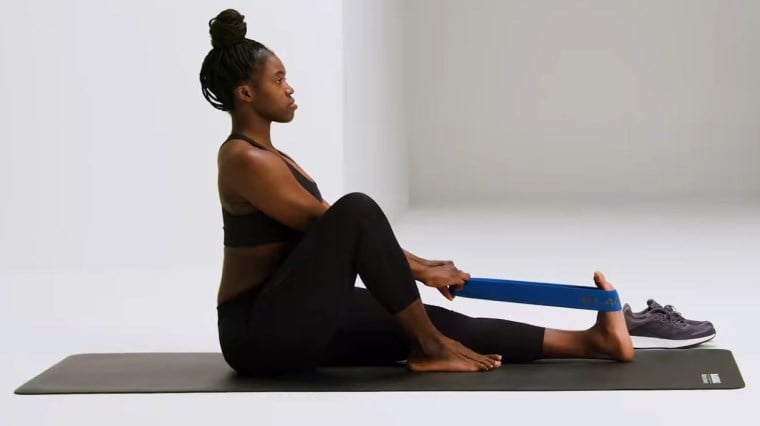
Toe and foot strengthening exercises keep your feet flexible and limber, reducing risk of common running problems such as plantar fasciitis and shin splints. Stretching small muscles that are underused when wearing shoes can improve your mobility and stability, and may also give your push-offs that extra power.
Plantar fascia & calf stretch with resistance band
While sitting on a yoga/exercise mat, loop your Blackroll resistance band around the ball of your foot then lengthen your leg. Keeping your back neutral, pull your toes towards you with the resistance band, applying tension. You'll feel the stretch in your calf muscles as your ankles gently flex, promoting mobility and strengthening the plantar fascia.
This can be performed with both legs straight (with knees slightly bent) or with the opposite knee to the stretched foot raised as per the image above. Hold the stretch for 15 - 30 seconds and repeat 3 - 5 times on each foot.
-
Blackroll Loop Band Set - Fabric Resistance Band - 3 Band Set$59.90
-
Blackroll Loop Band Set - Fabric Resistance Band - 6 Band SetFree Delivery in Aus$115.90
Toe curl / Towel curl exercise
To perform a toe curl, place your foot flat on a small towel on the floor and use a scrunching/bending action of the toes to grasp and bunch up the towel towards you. You will feel the muscles of your arch, foot and potentially your calves activate during the exercise. This can be performed while standing or sitting on a chair. Repeat 5 times, then move onto the next foot.
The toe curl exercise has multiple benefits including enhanced mobility and toe strength, increasing your balance and the overall wellbeing of your feet. With increased foot flexibility, you may be less susceptible to tightness in your feet and heel pain.
Once you are confident in performing the toe curl exercise, consider adding a small weight on the end of the towel furthest from your toes, then gradually build up to a heavier weight like a soup can.
If you have any concerns regarding the health of your feet or foot pain, please consult your doctor or podiatrist for specialised care.
Happy running!



